How Katamari became one of the most eccentric games ever
Before he joined Namco in 1999, Keita Takahashi had no idea how to make a video game. His speciality was not coding, and the models he made were not digital. But the cheerfully bizarre sculptures he crafted as a student at Tokyo’s prestigious Musashino Art University held clues that one day this bright young artist would go on to create comedic action-puzzler Katamari Damacy, one of gaming’s strangest treasures.
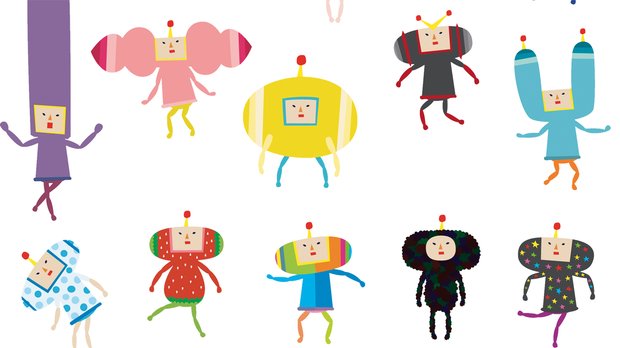
“To this day, I don’t really know what art is, and I don’t know why I studied fine art, but I just wanted to make things,” Takahashi tells us. “I had to think hard about what sort of things I could get away with making while I was at university, and I decided that making things that could be used as tools was a way of them being relevant to everyday life. So I made a plant pot in the shape of a goat, filled it with soil, and when you watered it, the excess water would pour out from its udders.” Takahashi’s goat sculpture had the desired effect. He noted the reaction from his teachers and peers as they laughed happily at his curious creation. Standing perhaps two or three feet high and with plants sprouting from its back, it was a collision of the real and the surreal, hilarious yet somehow affecting.
It was a moment that, though he didn’t know it at the time, would set Takahashi on the path to making games. That could wait till he’d sculpted a hippo tissue holder and built a table that transformed into a robot, of course. “I wasn’t interested in being an artist; I just wanted to have a useful role in society,” he says. “Perhaps volunteering for UNICEF would have been more useful, but making things is what I’m good at. I realised that video games were a good fit, because just like sculpture, you craft something and hope that it will entertain people. And better yet, a good game can spread around the world, whereas a statue stays in one place. Also, I was interested to move from a 3D world to the flatness of a screen. So that’s why I moved into games.”
So Takahashi joined Namco as a visual artist. But despite taking an induction course in development and being deployed on a few prototyping projects as an artist, he struggled to summon an interest in flagship Namco franchises such as Tekken, Ace Combat and Ridge Racer. He found those games formulaic and uninspired, and floundered for two years before realising that what was missing from Namco’s lineup was a flowerpot goat. “I decided that if I wanted to work on a game I found interesting, I’d have to come up with it myself, and that’s where the idea for Katamari Damacy came from,” he says. “I wanted to make something you could only do in a game.”
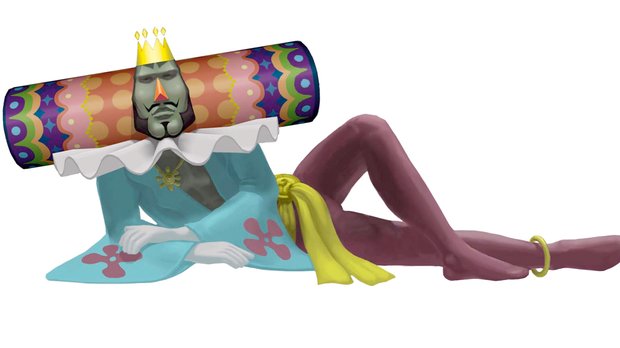
The concept was delightfully ludicrous. After the charismatic yet arrogant King Of All Cosmos destroys most of the stars and planets during a drunken bender, it is up to the Prince – his diminutive, downtrodden son – to pick up the pieces. Literally. Heaving a sticky magic ball around homes and peaceful suburbs, the Prince must roll up objects of ever-increasing size, eventually growing his katamari to proportions that can repopulate the heavens.
The name conveyed the game’s character perfectly. ‘Katamari’ means a ‘cluster’, ‘clump’ or ‘bundle’, while ‘damashii’ means ‘spirit’ or ‘soul’. Together, it’s an irreverent overstatement of intent, while the use of words with visually similar kanji offered a glimpse into the game’s playful nature. “The PS2 was released in Japan around the time I joined Namco, and there was a Sony launch game that I was excited about called Densen (Power Line), but which got cancelled,” Takahashi says. “In that game, you used coat hangers to slide along an electricity cable like a zip line, which I thought was a wonderful idea, because it’s a twist on something you’d see in everyday life. I realised that the world around me could be in a game, and that had an effect on Katamari Damacy.”
Takahashi earned approval from his superiors and began production in late 2001, with a relatively low budget in the region of ¥100m (then roughly £570,000). For reasons he can’t quite recall, Namco invited students from visual arts school Digital Hollywood University to help make objects for the prototype, but development on the proper game was split between Namco staffers and Now Production in Osaka.
Sign up to the GamesRadar+ Newsletter
Weekly digests, tales from the communities you love, and more
“Altogether there were no more than 20 people, I think, and around half of them were outsourced: the programmer [Kazumi Yamabe] and the lead designer [Masatoshi Ogita] were from Now Production, and the [object and map] designer [Minori Kubota] was in Tokyo at Namco, so I kept going back and forth between Tokyo and Osaka,” Takahashi says. “Around 90 per cent of the work was done in Osaka. I was nervous – it was my first time as director on a game – but I could visualise what I was aiming for, so it was just a matter of working towards it.”
Since rolling up objects was the core gameplay mechanic, Takahashi wanted to have hundreds of items scattered around each area. That meant each object had to have the lowest possible polygon count so as to not overload PS2’s limited system memory. The team looked for things that were simple in shape and that had some heft to them, but that wouldn’t look awful without antialiasing. Inspiration came from the kitchen, the living room and the high street. “The items were just everyday things that a Japanese person would recognise instantly and that would be fun to play with,” Takahashi says. “We discussed using some real-world products, but I don’t think we did in the end; we just made items that looked similar to real-world brands.”
The physical attributes of each item were intended to alter that of the katamari, so that rolling up objects of an awkward shape would skew the ball’s movements, but Takahashi is somewhat critical of the implementation. “We didn’t use a physics engine at all,” he says. “If we’d made it today with something like Unreal Engine, I wonder how it might have turned out.”
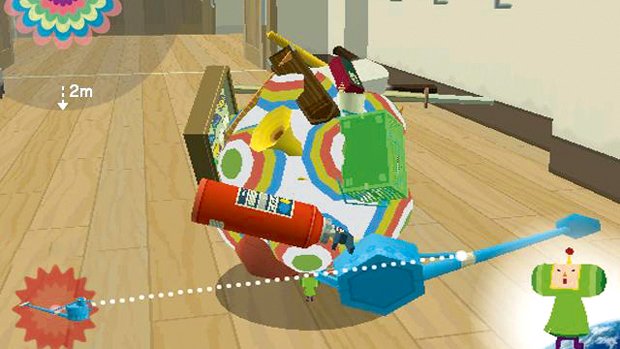
Still, the effect came across. Roll an ocean liner or lamp post into the katamari and the clump’s rhythm would change, while everyday items such as pencils, erasers and canned fruit – mixed with eccentricities such as sumo wrestlers, mermaids and Russian dolls – lent an easy charm to your growing bundle of stuff. Variation in size was key, too, with your katamari only able to absorb objects a little larger than itself. The visual style was key to the appeal, but so was the absurdity of hoovering up a stylised elephant or apartment block, the whole thing pitched somewhere between Taro Okamoto, Andy Warhol and Terry Gilliam, with the intro depicting stiffly animated dancing pandas, a psychedelic Mount Fuji, and a smattering of giant bouncing mushrooms, balloons and frolicking animals.
Another major part of the game’s appeal was its soundtrack. At the time, Shibuya-kei – a genre of pastiche-pop born in Tokyo that was typified by artists such as Cornelius and Pizzicato Five – was just about passing, but it left in its wake a post-ironic fusion of leftfield electronica, bossa nova and jazz that meshed perfectly with Katamari Damacy’s anything-goes humour. Unusually for a game, most of the music had vocal melodies.
“I thought it would be fun to sing along while playing the game, which is why we decided to use vocal music,” Takahashi says. “But we didn’t have much money, so we looked for artists who weren’t on a major label, more like B-grade musicians, to make the music.” Among the better-known performers was Masayuki Tanaka, who sang the theme tune, Katamari On The Rocks, and was also known for the soundtracks to Ultraman and Kamen Rider TV shows.
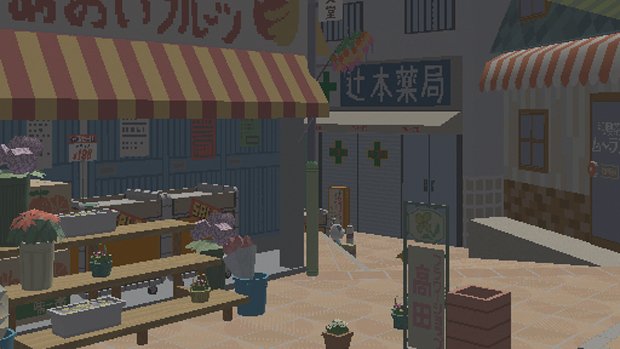
And at the heart of it all was the endearing relationship between the Prince and the King Of All Cosmos. There’s something tragicomic about the way the arrogant King berates his tiny heir at every opportunity, constantly telling him that his efforts in growing the katamari fall short. And in the face of this abuse, the Prince is inscrutable, his features never changing, as if determined to win the esteem of his father with one more level.
“It was just supposed to be comedic. I couldn’t understand why other games didn’t do things like that. I can’t really explain where it came from,” Takahashi says, admitting that he is often told that the Prince’s vulnerability is what makes players want to root for him. “I never thought very deeply about the Prince’s feelings. The King is so manly – he was based on Freddie Mercury and the Japanese ballerina Tetsuya Kumakawa. It’s the body of a ballerina with Freddie Mercury’s head.”
After nearly two years in full development, Katamari Damacy was debuted at Tokyo Game Show 2003, followed by a Japan-only release on March 18, 2004. With marketing support from Sony, it snowballed, and while the first-week sales of 32,000 may not have been in line with Namco’s ambitious forecasts, it was enough to secure a North American release that September. The game went on to sell 730,000 copies in those two territories and led to a PS2 sequel, We Love Katamari (released in Japan as Minna Daisuki Katamari Damashii), in July 2005, which marked Takahashi’s final involvement in the series.
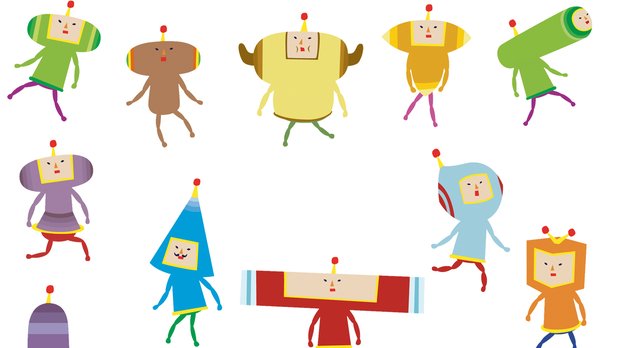
Future sequels and spinoffs followed on PSP, 360, PS3, DS, iOS, Vita and even Japanese feature phones, many of which have hewn close to the original, retaining sound effects, visual cues and even a policy of introducing rising pop-fusion music acts, such as female rap duo Bakubaku Dokin for Vita’s Touch My Katamari. “I’ve never played any of the sequels,” Takahashi says. “I’m not interested. It’s too scary.” Far from feeling flattered that Bandai Namco has stuck to his original concept, he believes it shows the same lack of imagination that he was pushing against when he created the game.
If Takahashi sounds like something of a contrarian, he is. As he speaks, he denounces the industry, both the majors and the burgeoning indie scene that is so reminiscent of the PS2’s golden era of weird Japanese games, while developments that you might expect him to embrace, such as Nintendo’s GamePad and Kinect, do not interest him at all. “Gaming hasn’t been around very long, so devices like that are unnecessary,” he says. “They’re nothing but a diversion, created for business reasons. Motion control is only fun because moving your body is fun. I’d rather people find the game itself the most fun part.”
And yet he is currently working on his first console game in years, Wattam, after earning more critical acclaim for his charming PS3/iOS oddity Noby Noby Boy and last year’s Tenya Wanya Teens, in which your shy adolescent character might accidentally urinate on a girl to whom he’d intended to confess his affection. Reliant on a custom controller, only one Tenya Wanya Teens cabinet currently exists, but it may yet see a release on “major platforms”.

As for what he learned from making Katamari Damacy, Takahashi tells us there were two main lessons. “I learned that the idea is the most important thing,” he says. “There are still so many things that haven’t been done and games that haven’t been made. [Looking for objects to include] also made me realise how much stuff there is everywhere. Human beings are such hoarders, especially in Japan. There’s so much stuff at a 100-yen shop, convenience goods that don’t exist anywhere but in Japan. It’s like, how convenient does everything really need to be?”
Read more from Edge here. Or take advantage of our subscription offers for print and digital editions.
Edge magazine was launched in 1993 with a mission to dig deep into the inner workings of the international videogame industry, quickly building a reputation for next-level analysis, features, interviews and reviews that holds fast nearly 30 years on.



